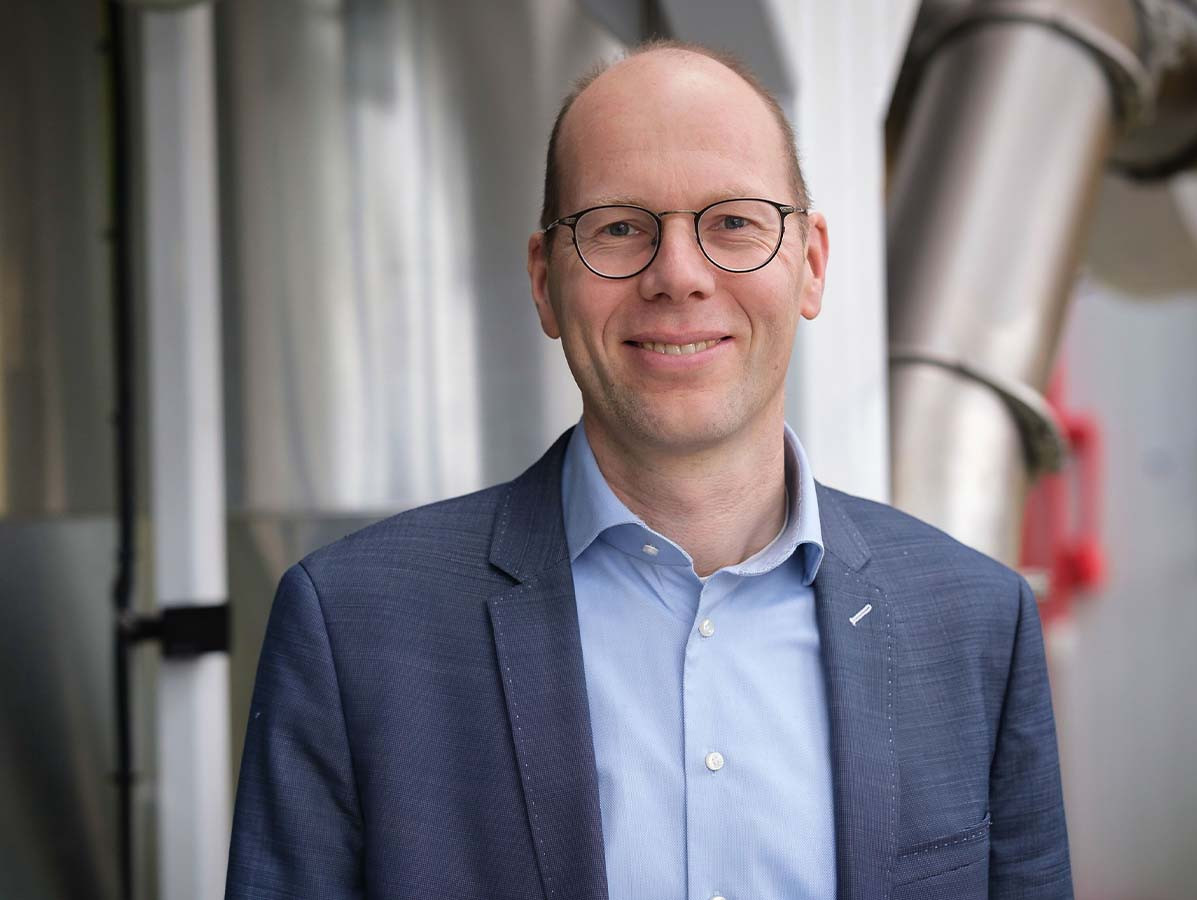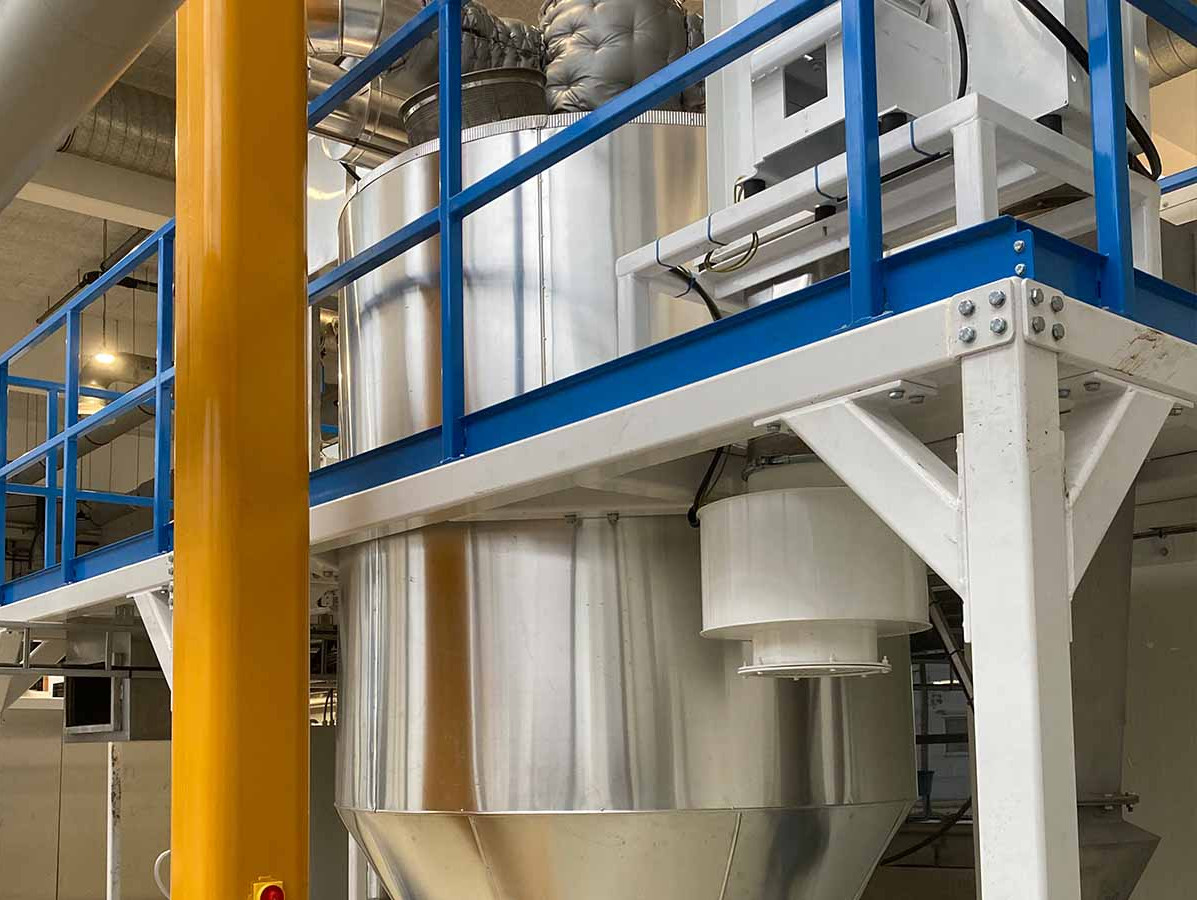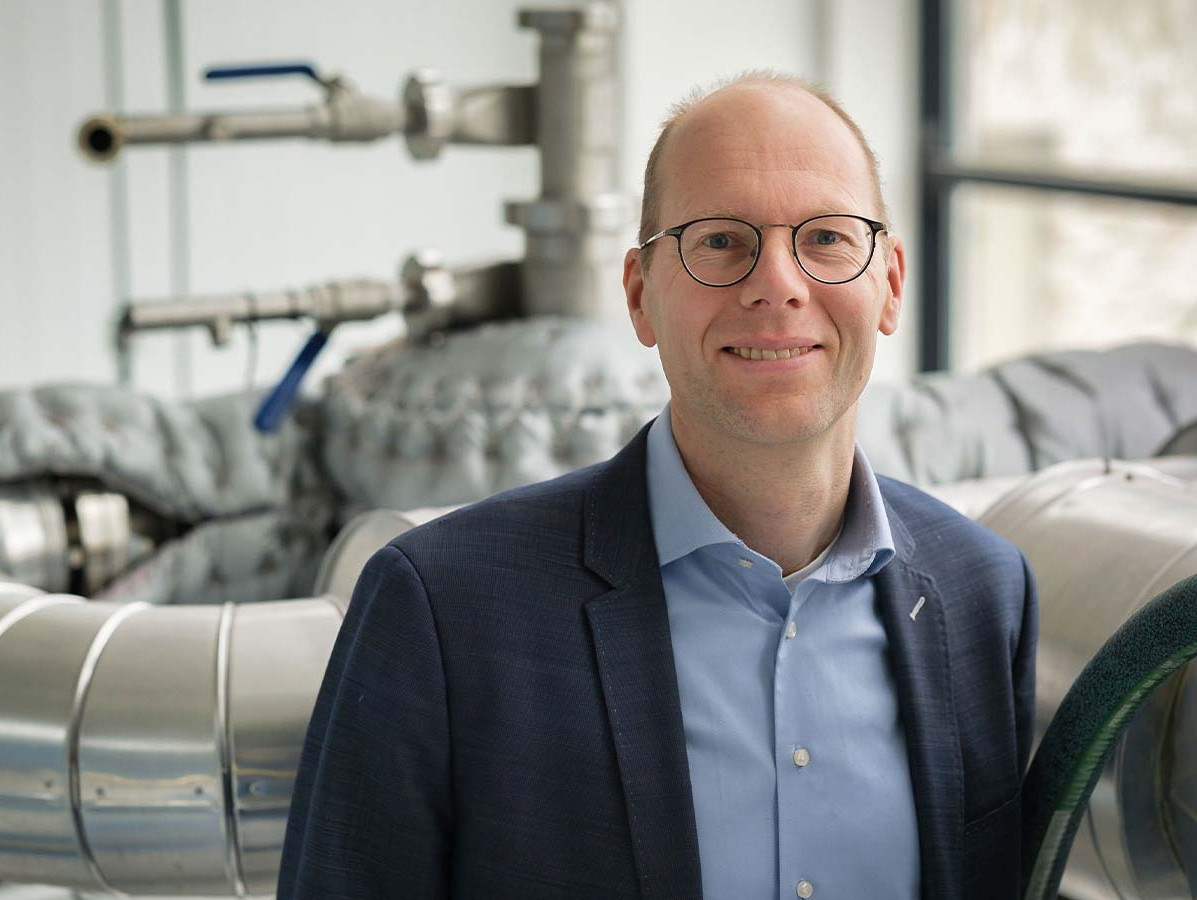
Prof. Dr. Ir. Maarten Schutyser was appointed as a personal professor of Drying and Dense Food Processing in the Food Process Engineering group at Wageningen University & Research as of January 1, 2024. His research group studies how food ingredients behave during drying and separation. His goal: to make the food chain more sustainable. What can we expect from his research team in the coming years?
Maarten Schutyser studied bioprocess technology at Wageningen University, where he also earned his doctorate in ‘Mixed Solid-State Fermentation’ (both cum laude). After his PhD, he began a career in Research & Development at Akzo Nobel Chemicals and NIZO food research. In 2008, he returned to academia at the Laboratory of Food Process Engineering at Wageningen University & Research, to work on the development of new sustainable technologies for food processing. And now, he is personal professor of Drying and Dense Food Processing. “I'm very curious by nature and love working on innovative technologies,” he says. “This position came my way. A unique opportunity, I couldn’t refuse!”
“Drying food makes it last longer. Examples are sun-dried tomatoes, dried split peas, pasta, rice, herb mixes, and powders like protein powder and dried coffee. By removing moisture and thus lowering water activity, for instance with hot air or freeze-drying, bacteria and fungi have less of a chance to grow. This allows food to be preserved and transported more easily year-round. But there are also disadvantages. Drying is the most energy-intensive operation in the food industry, and in many other industries too. In the food industry, 15% of the energy is consumed in drying processes, which is enormous. Moreover, these processes often affect the chemical structure or nutritional value of the product. Therefore, our research group wants to develop new, sustainable methods to separate and dry food gently. On one hand, by making drying processes more efficient and on the other, by exploring possibilities to avoid them altogether, as this could save even more energy.”
‘We need to make drying processes more efficient. And only dry when it's absolutely necessary’

Pilot plant spray dryer at WUR
“First and foremost, traditional spray drying. This technique is widely used in the food industry, especially in dairy. By creating more targeted products and preventing waste, there are significant steps to be made here.”
“In addition, I'm also looking at alternative drying technologies, such as contact drying and electrically driven drying. We are working on this with scientists from five Dutch universities in the ‘ELECTRIFIED project’. We are researching three technologies for drying processes; electrodialysis, electro-osmosis, and electrohydrodynamic drying (see box ‘Highlighted Drying Techniques’). Current drying processes for making products like paper or milk powder use air or steam and are therefore energy-intensive. We use the forces of electricity and electric fields to generate wind, which can dehydrate more efficiently. This technique is still in its early stages and not yet developed enough for scaling up or applying to food. But I am convinced that electrical forces can accelerate drying processes with much less energy consumption. We call this, with a new term, 'ELEC-ficiency'.”
“That's an interesting question. Many drying techniques are linked to specific applications. Spray drying is quite broadly applied, while drum drying, for example, is more specifically suitable for products where a little caramelization is acceptable; such as in making milk powder for chocolate milk. With electric dehydration or drying techniques, it's still a bit of a question which applications are most suitable. We are going to find that out.”
“I have three main objectives. The first is to reduce food waste. This can be done in various ways, for example, by processing waste streams. I've supervised a great project where we processed asparagus waste, the last part of the vegetable. These parts were thrown away, which is of course a waste. It’s important to choose the right drying process for processing, in this case, the spray dryer, and the right pre-treatment to concentrate the juice to preserve the flavor. We were able to make a very tasty asparagus powder.”
“My second objective is the production of plant-based ingredients. There is a lot of focus on making protein isolates, for example from peas, lupins, and fava beans. In order to do that, the material is first purified with a lot of water and then dried again. This consumes so much energy that the raw material may be more sustainable than the animal equivalent, but the final ingredient isn’t. That defeats the purpose. Therefore, we are looking at routes that prevent the need to dry: the so-called dry-separation or dry-fractionation routes. In this process, legumes are fractionated into protein-enriched plant ingredients. The combination of grinding and dry separation yields a protein-enriched plant ingredient that is a good alternative to spray-dried isolate. It's ten times more energy-efficient. I also like working with seeds. When you grind them, you get starch granules and protein fragments, which are easier to separate by size to make a protein-enriched concentrate.”
“My third objective is to really reduce the energy consumption of drying processes. For this purpose, we use the aforementioned electric dehydration and contact drying processes. It simply has to be more efficient. We can't cover the whole of the Netherlands with solar panels and put windmills everywhere. Therefore, we must consider how much energy it takes to produce certain ingredients and only dry when it's absolutely necessary. We also review the entire chain; which needs to be organized more efficiently as well.”

“The industry uses trial-and-error procedures to optimize drying processes for each product. Often successfully! But you don't know why or how it works, or whether that way is really the most optimal, and whether there are other, more efficient possibilities. We urgently need these other possibilities to make our production chain more sustainable. There has never been an ‘inside-out’ study on what actually happens in the transition from a wet concentrate to a powder particle. How exactly do the particles behave? How does a particle form? Does it become more like a raisin, or a round, hollow particle? And why, how? I want to study this. By drying a single droplet under very defined conditions; combined with, for example, rheology measurements. We will gain information from this, including on the visco-elastic properties. Next, the knowledge of the materials at the molecular and particle scale are translated into more rational guidelines, to sustainably redesign and scale up drying processes.”
“This collaboration ensures that the newly developed technologies are actually implemented in practice. There are many experts in companies. They know which problems have the most impact. The collaborations are pre-competitive, so there are usually no patents involved, and all the work is published.”
“Certainly! Although I don't have any project applications running at the moment, we regularly form new consortia. Companies that join our meetings provide meaningful input, can participate in the project, and get first-hand information. This gives them an advantage.”
Highlighted Drying Techniques
Electrodialysis is used to extract proteins from the residual stream of the potato processing industry, for example. It works with electro-responsive hydrogels. These gels absorb water, but when under electrical tension, they release the water. Combined with a special filter (membrane), the fruit water is concentrated. This process is much gentler than existing processes and there is less chance of product damage.
For products containing less water - such as pastes or paper - electro-osmosis can be applied. In the pores of a paste or paper, contain not only water but also charged particles that form a charged layer above the pore surface. When an electric field is applied, a flow is created that moves the particles. The particles, as it were, drag the water out of the product. For water that cannot be removed mechanically, electro-osmosis offers a solution to reduce energy use.
Currently, for example, spray dryers are used to make powders. Liquid product, spread as droplets in a tower, dries with hot air into a powder. We want to use electrohydrodynamic drying to speed up the drying. This process uses an airflow of ions generated in an electric field. This allows the process to be carried out with much less hot air and therefore less energy consumption.”
Photos: © Guy_Ackermans
Source: Vakblad Voedingsindustrie 2024